An overview of more – and less – successful teaching methods, as well as insights for parents.
The 1992 “Breakpoint and Beyond” study showed that 98 percent of the children who participated could be labeled geniuses because they met the corresponding criteria. The tests were conducted on 1,600 children between the ages of three and five. The term creative refers to the ability to find multiple unconventional solutions to problems. Children are primarily so imaginative because they aren’t afraid of making mistakes. But what happens when the same children are studied later in life? This is exactly what the researchers did. The result was that the little ones became less and less creative as they got older. Of the adults who had been tested as children, only two percent were still considered geniuses at the age of about 31. What had happened in the meantime? Does formal schooling nip children’s imaginations in the bud, as British author and expert on education and creativity Ken Robinson claims? This is the question we would like to explore in this blog post, as well as suggest ways to solve this dilemma.

Around out of every 10 children in the US doesn’t even graduate from high school – an absolutely unacceptable state of affairs says renowned neuroscientist Manfred Spitzer. This is because our brain is immensely capable of learning and entirely incapable of simply absorbing nothing. Our ability to learn only declines when 70 to 75 percent of our brain cells have died, not before. Spitzer cites an example of a girl who had to have surgery to remove the entire left side of her brain – where the language center is located. Today, the girl speaks two languages fluently. So how is it possible that people with a completely intact brain fail to even finish high school? The problem lies in the fact that the brain often doesn’t absorb what the teacher wants, but instead other things that it finds more interesting. But above all else, the human brain isn’t designed for rote memorization – simply cramming it full of random knowledge. You can’t think of the brain as a hard drive used to just save data. It always needs to form connections.
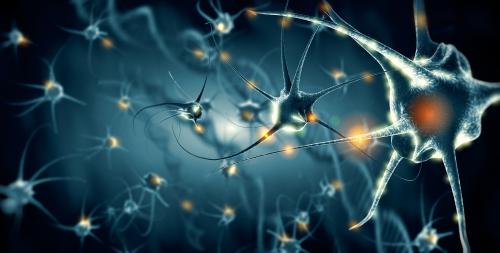
Our Brain Is Picky
The late Vera Birkenbihl also spent a large part of her career studying why people forget most of what they learn in school. Her conclusion is that it isn’t because students are uninterested, unmotivated, or untalented. If someone doesn’t learn something, it’s almost always because the subject matter isn’t taught well enough, i.e., the lessons are simply boring. It’s the instructor’s method, not the topic. Moreover, our brain isn’t designed to just absorb meaningless knowledge. But that’s exactly what happens in the classroom. That’s why children learn more outside of school than they do in it – things happen in their free time that interest them, that they want to pursue. This is where their urge to explore is awakened. Here children actively accumulate knowledge, whereas at school they tend to be bombarded with information during classes taught with a traditional teacher-centered approach. This is why Vera Birkenbihl says that learning “has to become awesome.”

Many of us had that one teacher who got us excited about what they were teaching and infected us with their enthusiasm so that today, even many years later, we still have a positive connection to the subject. What if they were all taught that way?
Education Overkill
Unfortunately, reality looks very different, even more so since the Organization for Economic Cooperation and Development (OECD) introduced the PISA study. As the name of the institution suggests, the main interests being pursued here are economic – i.e., preparing children to help the economy grow as much as possible when they become adults.
In the ranking of countries that participate in the PISA study, the United States isn’t even in the top 10. The question is what this says about the US educational system. In this case, it’s worth taking a look at China, the country that consistently tops the PISA list. At first glance, this seems impressive. But a closer look reveals a system unrelentingly focused on achievement and performance, with parents and grandparents spending a large portion of their wealth to ensure that their children receive a good education. And competition is fierce – everyone wants their child to achieve, to pass their exams with flying colors. The focus is on tests and competitions, and the children are drilled to do as well as possible in them. This learning process has nothing to do with exploring different opinions on a subject and debating different viewpoints. Instead, the standard answer is already predetermined, and the students only need to be able to recall it during the exam. There’s a lot of cramming involved. And that’s why the school day in China starts at 7:30 in the morning and doesn’t end until 8:30 p.m.

Even young children face intense pressure to perform highly. This makes it possible to get a great deal out of them. As a result, Chinese children almost never get to sleep in, have little opportunity to rest, and experience few moments of happiness overall. So it comes as no surprise that there is a relatively high suicide rate among children in China.
The country is touted as a model nation in the PISA tests, but is being at the top of the list really something to aspire to? In Europe, more precisely France, things seem to be going in the same direction. Daycare there is called “école maternelle”, which already has the word school in its name (“école” is French for school). Here, compulsory education begins at the age of three, with a curriculum already in place and “achievement booklets” for the students. The little ones sit at tables in a disciplined manner and pursue a predetermined activity. The teacher is viewed as an authority figure that students are not allowed to address using their first name. Some children spend up to 10 hours a day at the “maternelle”.
The idea behind this type of school was to prevent inequality from ever taking root between children from different backgrounds, with everyone enjoying the same initial opportunities right from the start thanks to this early education. In addition, this is supposed to help children get used to life as part of a community.
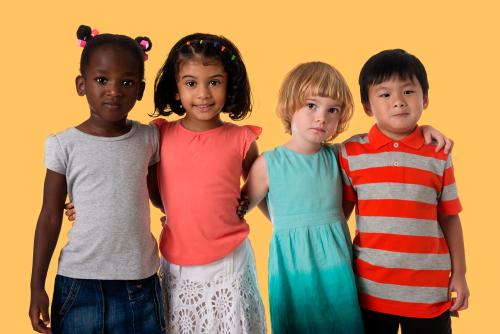
You Just Have to Function
Although American and French daycare centers differ, there are still similarities across Europe and the United States. The school systems of these countries as we know them today were all created during the Industrial Revolution to meet a specific need – the need for primarily young men who could follow orders during times of war or work in a factory on an assembly line and perform simple tasks as instructed during times of peace. This was something you could prepare for well in school. Fortunately, times have changed in the meantime. But now the economy, of all things, has becoming much like the military, with companies primarily looking for graduates who can simply function well within the system. “Faster, higher, farther” is the guiding principle. Everything is timed ever more tightly, must be completed even faster, and yield even more profit. Managers are becoming increasingly depressed because they can’t handle the pressure.
More and more people are asking themselves if this is really what life is all about. Especially since unlimited economic growth isn’t possible anyway. It’s time to ask this question in the realm of daycare and elementary school, which ultimately serve capitalism as well. Here, children are prepared for life in the real world – a world currently dominated by competition.
Babies and Competition Don’t Mix
Brain researcher Gerald Hüther explains why the system is able to exist at all and why parents go along with it – they are simply afraid that their children won’t amount to anything. At the same time, he knows that you can’t force people to learn – you can only invite them to do things. He calls this the art of education. Apart from that, the idea of competition is something very young children already dislike. Inside the womb, they had a close connection to their mother through the umbilical cord, and this desire for connection continues after birth. Tests have shown that six-month-old babies have a cooperative attitude. In a simple experiment, they always chose the situation in which the participants helped and supported each other. It was only six months later that the result was not quite so clear-cut, because the children had become accustomed to competitive situations from their daily lives and, in a final test, now sometimes also favored situations in which they worked against each other. They had copied this behavior from their environment.

The pressure on children and young adults is not unique to China, however. A German high school student with very good grades complained in a now-famous open letter that she has no life since the country shortened high school from 13 to 12 years. She no longer has any free time to just have fun – you know, the thing that makes life worth living. In her opinion, school woefully fails to achieve its goal of preparing students for real life. Vera Birkenbihl sees it similarly – she says that instead of doing fractions, students should learn how to read a train schedule; instead of declining and conjugating verbs, they should learn how to iron; instead of calculating square roots, they should learn how to tell root vegetables apart. And above all, she says schools need to teach the right learning methods.

Getting into a Flow State
By this she means methods that empower us to teach ourselves, so we know how to learn, where to look something up, or what you would ask an expert about their field. In general, questions are the basis for expanding one’s knowledge. Independent learning also makes a person more self-reliant. Vera Birkenbihl wanted to finally get away from rote cramming, because if you cram, you don’t understand, you don’t see the connections, nor the principles behind them. “The better we understand something, the less work it takes to memorize it,” she said. Getting into a flow state is important here as well – some may be familiar with this from jogging, where you run and run, feel super light, and have the feeling that you could go on forever. Others have similar experiences of happiness when they are completely engrossed in computer games. The amazing thing is that this also applies to learning! For this to happen, we need to make sure that what we want to learn is neither too challenging nor not challenging enough. If it isn’t challenging enough, we get bored. If it’s too challenging, we get frustrated. The challenge always needs to be in the sweet spot – difficult but still doable.
Did you know?
At a carpet weaving workshop in Mexico, the trainees first watch for two years before it’s time for them to start weaving themselves. Driving a car may have proven to you that this method works, because even as a passenger without a driver’s license, you learned what was important when moving through traffic just by being there, meaning that later on you didn’t start from scratch when you first sat behind the wheel.
Out of the Comfort Zone
That’s why it’s important to adapt the pace of learning to the individual child, because the line between too challenging and not challenging enough is different for each child. First, everyone starts small – with the basics. Only when we’ve truly understood these can we move forward. Taking a look at our brain can offer some insight in this regard, particularly the mirror neurons. They become active whenever we watch others doing something, do the same thing ourselves, or even just think about doing it. Even if someone only mentions the activity, our mirror neurons fire. The way that mirror neurons function is something that can easily be applied to teaching – learning by imitation. But for us to really learn, we need to have observed something multiple times. When it comes to school, this ideally means that the teacher shows how to do something, shows it again, and then shows it one more time. Once the children have watched often enough, they can slowly begin to take their first steps themselves, in slow motion. Only when the students feel more comfortable can the teacher increase the pace. This applies equally to mathematical equations, playing the violin, or dancing the tango. In the real world, however, the situation is often much different – the teacher writes something on the blackboard once, and then the students practice it. So it’s no wonder that those who need a little more time to internalize the subject matter are left behind and can’t keep up.

Slow, Slow, Quick, Quick
The slow pace at the beginning of the learning process is crucial. A total of 30 extremely slow movements achieve about as much as 120 fast ones. This is why tai chi, a kind of kung fu in slow motion, is similarly effective for the muscles as the much more dynamic kung fu itself. It also makes more sense to train for multiple shorter sessions in the beginning instead of a single long one. This is because the brain continues to process what it has learned for a while after each session. In addition, it’s important to practice what you’ve learned not only in the real world, but also mentally. Even top athletes learn sequences by imagining them over and over again in their minds or by watching other athletes do what they do – this is an ideal way to complement actual training. These mental exercises have a tangible positive impact on their performance.

Vera Birkenbihl advises taking action instead of just talking about it – as is often the case at school. This is the only way to ensure that the learning process is effective. She suggests exaggeration as a learning technique – in the beginning, you simply imitate what you see in order to exaggerate it later. This is because only when someone has identified the essence, the core of something, can they caricature or parody it, such as by singing a song they are practicing with the wrong intonation, for example. Another effective learning method is variation. When learning how to play a tune for guitar, it’s best to play it again on the recorder – or on the piano. Translating what you’ve been learning to another medium reinforces it in your mind.
Did you know?
Chewing gum is good for the brain – because it supplies it with more oxygen. This isn’t only ideal for children, but also for adults. Particularly if they don’t move much.
Poor Language
And how do things look when it comes to learning languages? First the bad news – in the United States, unfortunately, the situation is pretty awful. In this country, English tutors, but also tutors for foreign languages, are in extremely high demand. Based on this fact, you might conclude that the majority of students simply lack a talent for languages. But if you look at other countries around the world, the situation is quite different – people often speak two, three, and sometimes even four languages fluently. Are North Americans simply less intelligent or linguistically talented? Of course not – they obviously are just learning using the wrong methods.
Instead, Birkenbihl’s method is more effective. The lateral thinker, as she refers to herself on her website, thinks vocabulary cramming and conjugation tables are completely ineffective. Her first recommendation is something that is frowned upon in language classes, namely translating word for word. This makes the structure of a language visible and helps students understand how the language works. In her video “From Not a Word to a Bit of Turkish,” Birkenbihl explains how we can easily acquire some basic skills in Turkish in brain-friendly way – a language that, in principle, is easy to learn, since it follows clear rules. In other words, the student learning the language doesn’t have to memorize countless exceptions and variations, as is often the case in English.
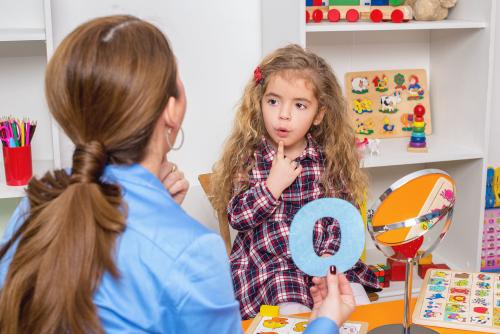
Learning a Language? Forget Grammar
When learning a language, it’s best not to try to understand the grammar at the beginning. It’s better to accept that you don’t know the right ending and just pick one when speaking. After three months, when you’re more comfortable with this form, you can then open up a grammar book and you’ll understand the explanations much better. Birkenbihl also advises students learning Turkish not to practice endings right away when learning Turkish words, but to start with English words and then adding the Turkish endings. Using this method, students would first conjugate English verbs with the unfamiliar Turkish ending. This way, the learner doesn’t have to immediately contend with two new components – the foreign word and the foreign ending. As soon as they get used to conjugating with the Turkish endings, the Turkish words can also come into play.
Birkenbihl also has a tip for dealing with the unfamiliar pronunciation of Turkish words with their many ö’s and ü’s: repeatedly sing Apples and Bananas with the ö and ü versions to get used to the accumulation of vowels. It’s really as simple as that.
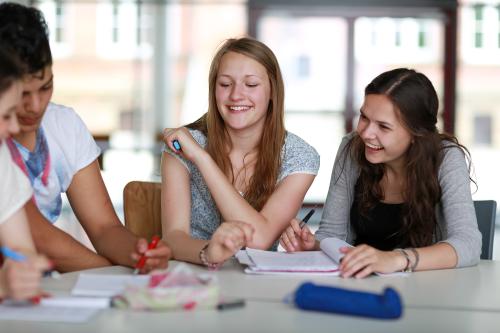
More Tolerance – Even for Mistakes
Above all, you can’t be afraid to make mistakes. Small mistakes don’t matter in communication. The native speaker hears what they’re supposed to hear anyway and will “straighten out” the discrepancies in their brain. In general, the fear of making mistakes and of being judged because of them increases with age. Babies learning to walk aren’t afraid of doing something wrong – falling down is part of the process. The toddlers try to get up, fall on their bottom again, but despite this “mistake,” don’t give up and instead keep on trying. Countless wobbly attempts to stand up and falls are necessary until the babies can finally walk. As a result of this fearlessness, children learn an incredibly complex process that involves the gravitational constant, the laws of leverage, and differential equations – namely walking on two legs. Who knows if we adults would have even dared to learn to walk under these conditions.
Because children aren’t yet afraid of failure, they are much more creative. At school, however, mistakes are no longer tolerated and are instead corrected immediately – and creativity decreases significantly as a result. Vera Birkenbihl argues that children shouldn’t be corrected at all while learning, because this stops the unconscious (simple) learning process and makes it conscious.
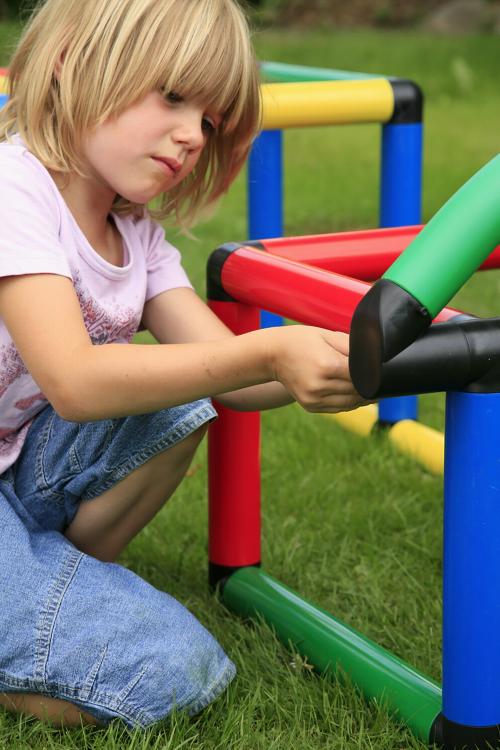
A child must have a supportive environment that not only allows for mistakes but also believes in their abilities so that they can develop in the best possible way. If they have a positive attitude towards learning, they will be successful. For example, research has shown that children who had a desire to improve in one particular area immediately improved in all other academic areas. In the process, they realized that if they wanted to get better in a certain area, they could do so with enough practice – “if I can do it here, I can do it in other areas as well.” That’s why it makes sense to give students encouragement. The result would be a higher GPA.
Mirror neurons also play an important role in this process, as they are associated with feelings. Whenever we mention something negative – like complain about something, criticize someone, or make fun of them – the associated feelings are brought to the fore. That’s why school – or better yet, the home environment – should be conducive to a positive attitude toward learning.

Pablo Pineda Ferrer, the first European with Down syndrome to earn a degree in education, proves that this works. For a long time, people with trisomy 21 were considered unfit to attend school. At a young age, Pablo had a great special education teacher who believed in him. As you can see, the teacher’s positive expectations made quite a difference.
What Are You Worth as a Human Being?
But it isn’t only the expectations of individuals, but also the social structures that have an impact on how someone turns out – whether they do well in life, whether they earn a decent living, and so on and so forth. After all, not every diploma or degree is created equal. Doctors and lawyers are generally well-respected professions, but the situation isn’t quite as clear-cut when it comes to contractors. Some talents are widely considered superior to others. People that don’t graduate from high school often don’t earn enough to lead a life free of financial worries. As documented in the film Alphabet by Erwin Wagenhofer, some people are so frustrated that turning to crime doesn’t seem so far-fetched. Getting out of this vicious circle is often difficult.

A mindset shift needs to take place so that people without top degrees also have some status. After all, not having a degree or having a “lesser” degree says nothing about whether or not they are talented. Moreover, good grades and high SAT scores do not guarantee that you’ll become an excellent surgeon after attending medical school – and yet it’s still nearly impossible to get into medical school without a GPA of at least 3.5 or higher. That’s why it’s a good idea to encourage every single talented student. This is only possible, however, if the school system radically changes. At the moment, schools are designed to educate future university professors – but very few of them actually become professors.
Sir Ken Robinson, British author and consultant who has led numerous international projects on creativity, speaks of a hierarchy of school subjects – mathematics at the top, followed by languages and then the arts. He definitely considers mathematics to be extremely important. But he says that dancing is equally important. To illustrate this, he describes the case of Gillian Lynne, who suffered from attention deficit disorder as a high school student. Fortunately, she had a teacher who recognized that she had a talent for dancing. Her mother sent her to a dance school – and a few years later, Gillian Lynne became wildly successful as the choreographer of the musicals Cats and Phantom of the Opera.

Dancing, Making Music, Painting
Arno Stern, a German-born educator, also believes that dancing, making music, and painting are essential to a child’s development. By expressing themselves in these ways, children become fulfilled individuals who can accomplish great things. This is why he founded the “Malort” (“Painting Place”) in Paris, a studio where children – but also adults – can play the “painting game” as he calls it – simply painting whatever they feel like just for the fun of painting. From Stern’s point of view, it isn’t life that should be taken seriously, but rather play. This is because the focus during play is on enjoyment and activity, not on making or producing something.
Stern has been running his painting place since 1949, and he has noticed a change – while the paintings used to be imaginative, experimental, and playful, today they seem increasingly “engineered.” Children no longer paint spontaneously; they do so according to adult rules. They compose what they have been taught. The images painted by today’s children no longer have anything joyful about them, they seem more like carefully planned paintings. Children are increasingly losing their childishness, becoming more adult, crushed by the theoretical knowledge and burden of what they have been taught. According to Stern, the most serious development is that children are being trained to perform a task. They are being molded to meet adults’ expectations. These kids are supposed to simply be cogs in the machine. The goal isn’t to raise them to be strong-willed individuals, but to produce individuals who are dissatisfied enough with their lives that they turn to consumption.
Stern’s wife believes that a child needs to be “born” first after birth, that it should be allowed to develop freely so it can figure out and decide what it wants – without stealing their childhood. We adults owe them this happiness.

Waldorf Isn’t Just About Dancing Your Own Name
One type of school that takes this into account already exists: the Waldorf school, and also Waldorf daycare centers. In addition to subject-based instruction, a high priority is placed on artistic and technical activities. The aim isn’t only to develop children and young people’s intellectual skills, but also their creative, artistic, practical, and social skills. This is why all of the students take handicrafts classes, where they sew, tailor, and knit together, and shop classes, where they saw, hammer, and file. The subjects of horticulture and eurythmy, where language and music are expressed through movement, are also part of the curriculum. Scientific evidence shows that children acquire skills that go far beyond these artistic pursuits.
What’s special about this type of school is that the students go through 12 years of schooling together as one class – without grades and therefore without ever having to repeat a grade. The Waldorf education isn’t primarily about preparing students for university – they can also finish school without earning a high school diploma – but rather about awakening a love of learning, especially in the early years. The goal is for children to develop personal initiative, and not under the pressure to perform but because they are enthusiastic about different subjects. The lessons are always connected to the students’ living environment. A focus is on highlighting basic principles and interrelationships. Overall, the aim is not exclusively to impart knowledge, but to support the overall development of each individual over a specific period of time.
Main lesson blocks are an important element of the Waldorf education. This involves students primarily working on one topic for a longer period of time –they might spend several weeks working extensively on topics related to math, geography, or history, for example – or on a single language. For instance, they might spend two hours a day working on a specific math problem, thus gaining a deeper understanding of the subject matter – until, after three weeks, it’s time to move on to another subject.
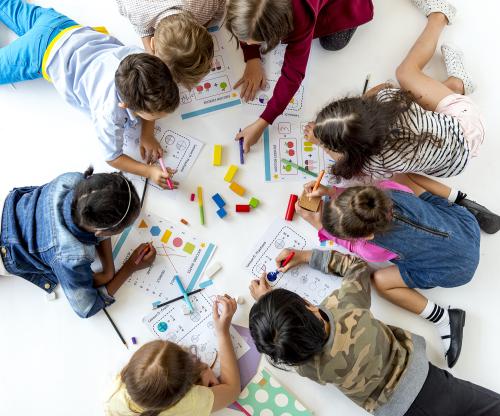
Healthy Body? Healthy Mind!
Salutogenesis is also a top priority in Waldorf schools and daycare centers. This refers to living a healthy lifestyle and staying healthy to prevent disease from occurring in the first place. This inner peace is created when the body and mind are in harmony. The aim is to achieve a balance across many areas: between activity and passivity, tension and relaxation, concentration and contemplation. But also, between the interests of the self and those of others. As part of salutogenesis, revitalizing exercises are performed every morning and whenever the need arises, with students reciting, clapping, or relaxing their muscles and bodies. Only then are they intellectually challenged once again.
As unique as the Waldorf education is, it’s still not completely free and independent of social constraints – in the end, Waldorf students have to take the same exams that apply to everyone, just like other people of the same age. In this case, they have to perform well provided they want to earn a diploma. But at least they pick up the right attitude and, above all, the joy of learning along the way.

Montessori Education – Helping Students Help Themselves
Montessori schools and daycare centers have a similar concept. Here, too, the focus is on the individual student and his or her personality. The assumption is that each child has an inner blueprint – with strengths, weaknesses, and individual abilities. The teacher’s job is simply to help the child develop so that it can implement this blueprint. That’s why Montessori’s guiding principle is “help me do it myself.”
But what does “helping students help themselves” really mean? Above all else, the teacher’s role, the daycare worker’s role, and even before that, the parents’ role, is crucial in this regard. From the Montessori point of view, constantly keeping young children entertained isn’t necessary. Instead, they should be given the opportunity to discover their interests for themselves. Similarly, teachers don’t stick to a set agenda and aren’t purveyors of knowledge, but rather observe students and interpret their behavior. They are on hand when the student wants to learn something new, and they prepare the learning materials. In this process, they give the child the freedom to do what interests them, encouraging them to stick with an activity and see it through to the end.
In this way, children learn on the basis of their own motivation, can focus on their own talents and needs, and act with self-determination. They can develop at their own pace and aren’t compared to each other. This is also why grades aren’t needed here either.

One, Two, or Three?
Self-determination also means that children at Montessori schools can make their own decisions. They are involved in many of the decisions that affect them – whether it’s going on a field trip together, what song to sing next, or what picture to hang in the classroom. This level of participation requires that the children first be fully informed and educated so that they can form their own opinions. They are then called upon to speak freely on the subject; their opinion carries weight.
The difficult thing is that children still aren’t completely free to make their own decisions because they have to adhere to established norms and values. Children don’t always reflect on the implications of their decisions, which usually emerge spontaneously because they are still in the process of developing. This is not an advantage in every situation. As a result, the teacher must weigh the extent to which they will accommodate the children’s will.
If children are allowed to develop freely, they grow into independent and self-actualizing individuals. Needless to say, self-determination also means that children will encounter problems. With one difference, however – they have to deal with their problems on their own; they aren’t immediately solved by their parents. In this way, the children learn to look for solutions for themselves and others and overcome initial obstacles. This also means that they will sometimes fail, just as people fail in certain situations later on in their adult lives. In the process, however, the children gain valuable experience that will help them in life.

Strengthening Strengths
The Montessori method of education doesn’t focus on what the children lack, but on strengthening their talents and abilities. The adults encourage and support the children so that they become even better in the things they are already good at. The point here is not to praise the children for no reason, but to have a positive effect on them by giving them honest support.
The Montessori concept is designed to be applied right after birth. Children are receptive to stimuli from their environment, particularly during the first six years of life. This is where they develop their personality, as well as their skills. During these years, children demonstrate a strong willingness to learn.
Ditch the Rigid Rulebook
Maria Montessori was one of the first women to graduate from medical school with a doctorate. At the end of the 19th century, she developed a new educational approach that focused on the child as an individual. She particularly wanted to distance herself from traditional teaching methods, which imposed strict rules during learning. Rules that were created by adults and had little relation to the reality of children’s lives.

The concept has proven effective, as there are many famous Montessori students – from the British royal family’s two princes to Nobel Prize in Literature laureate Gabriel García Márquez, artist Friedensreich Hundertwasser, and Facebook founder Mark Zuckerberg. But not all children are able to cope well with this level of independence. Learning on your own also means being in charge of the learning process yourself and giving up the usual attitude of simply being a consumer. This can sometimes make children feel insecure.
Or Maybe No School at All?
One child who never even went to school is Arno Stern’s son. His parents simply allowed him to develop freely. He had a happy and carefree childhood because he never experienced anything like the fear of exams due to his special background. He was able to maintain his confidence in himself because he was never compared to anyone else – never had to prove anything. His parents didn’t force him to learn anything that didn’t interest him, so he was able to pursue things that fascinated him. He learned to read very late – so late, in fact, that his parents actually began to worry. But at some point, he felt the desire to learn the skill. He just had to in order to move forward. This was due to the fact that he wanted to know how a miniature railroad worked – so he took it apart. But the only way to get more information was to be able to read. So in the end, he taught himself.
Overall, to him learning was something that just happened in passing. He always learned whenever he felt like it. Among other things, the native Frenchman practiced German for up to six hours a day simply because he enjoyed it. Today, André Stern is a master guitar builder, musician, and author – and speaks fluent German. The tremendous amount of freedom he enjoyed and the ability to become excited about what he was doing were what shaped him.

What If Little Liam Doesn’t Learn Anything?
What exactly happens in the brain during learning? To illustrate this, you have to realize that the brain is already “finished” at birth. All of our brain cells are already there. What’s missing are the connections between them. And that’s exactly what happens during learning – new connections are made, new pathways created. Whenever we pursue an activity, these pathways are either newly created or reinforced. This is why unlearning something is so difficult – pathways that already exist, which represent habits, have to be replaced by others. If we don’t use an area of our brain because we no longer perform an activity, the pathways become weaker again.
The amazing and, at the same time, important thing is that most learning happens in the first few years of life. A child learns in giant steps; it acquires a great deal of knowledge and many new skills. Only then comes the “fine tuning,” when it’s all about details. The brain regulates the learning process of young children by ensuring that they absorb simple things first, then gradually more complex ones. After a few years, the brain actively reduces the speed at which you learn, so that you can approach the subject matter in smaller steps from then on. The advantage at this later stage is that from here on out, the brain can also remember things well and permanently – which wasn’t the case before.
Over 17 and Already Old
Older people can only learn at 10 percent of the rate of children. In this case, by the way, the term “older people” refers to anyone over the age of 17. The brains of these “older folks” are still learning new things, but the process has slowed down considerably. This means there’s actually some truth to the phrase “you can’t teach an old dog new tricks.” Adults acquire new knowledge and skills mainly by slightly varying the pathways in the brain that already exist.
Did you know?
A new mother’s brain is completely reshaped after pregnancy. That’s why they’re “not quite up to speed” mentally during the first six weeks after delivery. But afterwards, once the reshaping process is complete, their brains are more powerful than before.
Here’s a good example of how the brain works: at the age of 7 months, a baby already recognizes general linguistic structures and knows the first simple grammatical rules. But they didn’t have to actively learn this, the brain simply picked it up in passing. By the age of six, a child has mastered all of the grammatical rules simply because they have been surrounded by their native language the entire time. This is why children have no problem learning a foreign language at a young age. A 70-year-old who only speaks their native language, on the other hand, will have difficulty doing so. But another person of the same age who already speaks four foreign languages can learn a new language comparatively easily and quickly, since they can draw on existing pathways in the brain; it doesn’t take them six years to do it like a baby.

A Paradoxical Shoebox
Manfred Spitzer calls our brain a “paradoxical shoebox” – the more we pack into it at a young age, the more we can fit into it later. That’s why children should start learning at an early age and, above all, learn the right things. The earlier parents or caregivers intervene in a child’s development and promote learning processes, the better. This is because the structures in the brain that haven’t been laid down by the age of 17 are difficult to form. Which is precisely why it’s so dramatic that children in some countries cannot attend school because they have to contribute to the family’s financial needs from a very early age.

Did you know?
It only makes sense to study a maximum of twelve hours before going to bed. When we’ve really grasped what we want to learn, our brain will perform the necessary repetitions itself – afterwards, everything sorts itself out in the cerebrum. That’s why it’s especially important to get more sleep during exam periods. If you don’t get enough sleep, not everything you’ve learned gets transferred from your short-term memory to the cerebrum – meaning you spent some of the time studying for nothing.
It is at daycare, kindergarten, and elementary school that the kind of learning that impacts our later lives takes place. At these institutions, teachers and caregivers lay the foundations for lifelong learning. Since knowledge is becoming outdated more and more quickly, especially in today’s world, it’s important to whet children’s appetites for lifelong learning and to prepare them for it. Those who remain capable of learning and inquisitive will be able to navigate today’s (working) world in the best possible way. But it is precisely this important skill that isn’t being taught in school (at least not yet).
Daycare First
Since beginnings are crucial, the foundations for lifelong learning ought to be laid as early as during daycare. This is difficult, however, because daycare workers earn less than other educators. Compared to a university professor, an elementary school teacher also earns significantly less, although in light of this fact, their performance is that much more important. Another problem is that in the United States – in contrast to many other countries around the world – daycare isn’t free.
In other words, the system needs improving. This is illustrated in no small part by the fact, mentioned at the beginning of this article, that a comparatively large number of children leave high school without even earning a diploma.
One question that often arises in the field of early childhood education is whether digital media should be used in the first few years of learning. Neurobiologist Manfred Spitzer has a clear answer to this question: no. Very young children need sensory stimuli – they want to smell, taste, feel. Tablets and laptops don’t offer this at all. Instead, finger games are a much better alternative. This is because we learn to count using our fingers – hands are neurobiologically related to numbers. Scientific experiments have shown that learning to count using our fingers has an incalculable impact on how we handle numbers as adults. That’s why we should definitely keep using such traditional methods of learning.
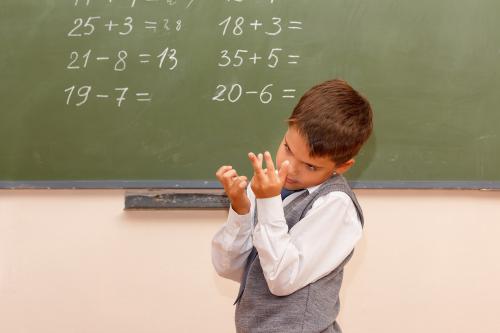
So Now What?
You’re probably now wondering what to do – how can we help our children learn more effectively? First of all, current teaching methods would have to be thoroughly revised to reflect the aforementioned aspects. They only work to a limited extent. As soon as we recognize that something is outdated and ineffective, it makes sense to switch methods. A step in the right direction would be to eliminate the competition and educate children to become curious, inquisitive, and creative individuals. Individuals who actually pursue their interests. After all, if you get to do what you do best, you’ll also get really good at it. And that, in turn, benefits everyone.

Why Did We Write This Article?
Each and every day, we consider what children require for their healthy development, what’s good for them, and what’s fun for them at the same time. All of these findings flow into our product development process. After all, if you want to design really great toys, you have to know children and their needs extremely well. We think we’re doing a pretty good job of that.
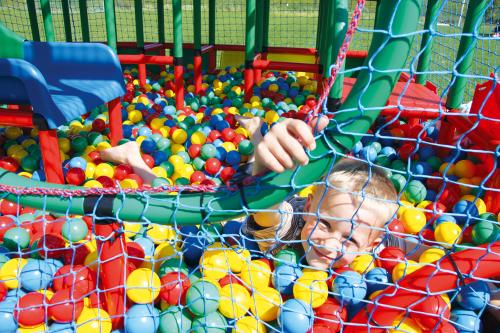
For specifics on how alternative learning methods can look, read the blog article “Actually, I Really Like School”.
Sources:
- George Land. Evidence that children become less creative over time (and how to fix it)
- Ken Robinson sagt: Schule erstickt die Kreativität
- Manfred Spitzer. Wie Kinder lernen und was man darüber wissen sollte. Vortrag in Düsseldorf, 23.3.2012
- Vera F. Birkenbihl. Pauken. Elternnachhilfe. mvg Verlag, 2. Aufl., 2020.
- Vera F. Birkenbihl. Von null Ahnung zu etwas Türkisch 2007
- Erwin Wagenhofer. Alphabet: Angst oder Liebe. Film, Deutschland, 2014.
- Die Schule: die école maternelle. Karambolage. arte
- Yakamoz Karakurt. Mein Kopf ist voll!
- Vera F. Birkenbihl. Offizielle Website
- Bund der freien Waldorfschulen
- Montessori-Schule
- Montessori Pädagogik. Montessori Lernwelten
- Empowerment in der Montessoripädagogik. Montessori Lernwelten
- Berühmte Montessori-Schüler. Montessori Fachoberschule Franken

Comments